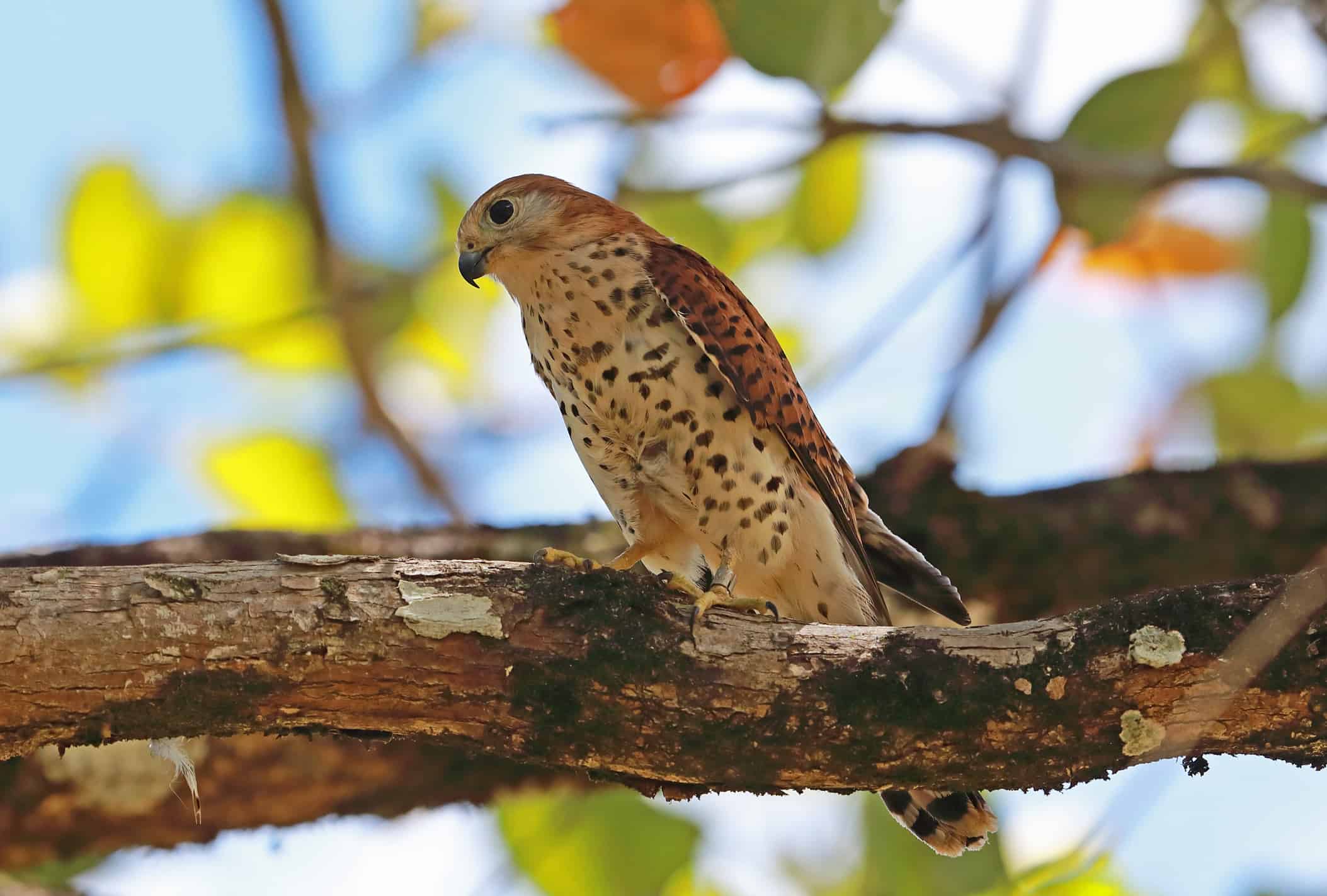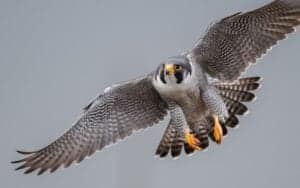In a remarkable twist of fate, the survival of the world’s rarest raptor hangs in the balance due to an unexpected savior – an invasive plant. Discover how this unlikely relationship has become a lifeline for these magnificent birds.
What is the Rarest Raptor in the World?
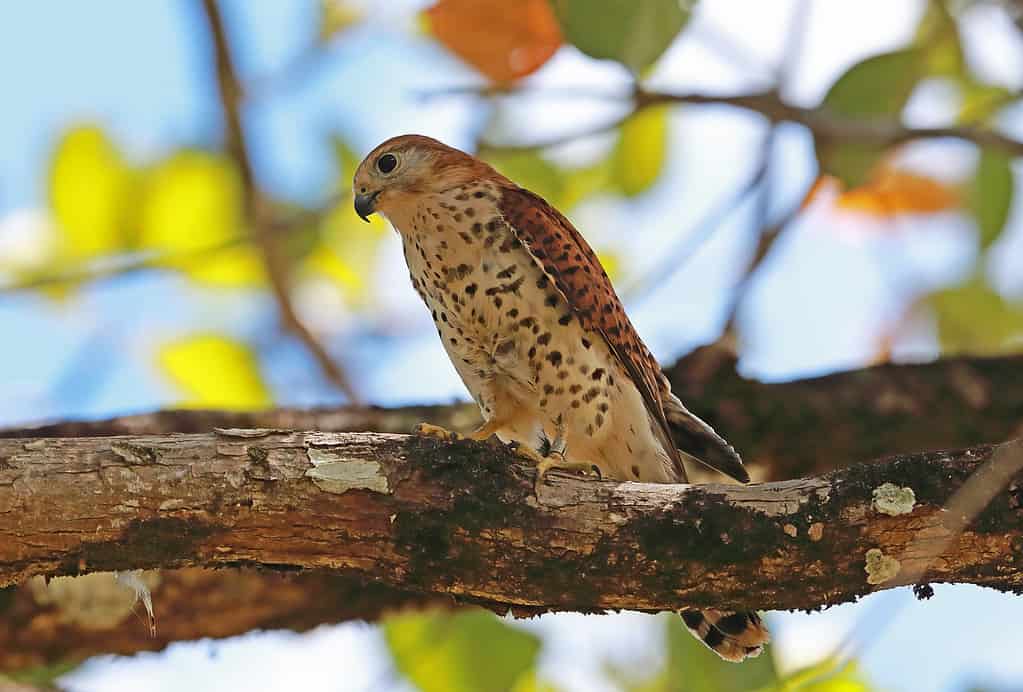
If you want to help save the Mauritius kestrel, the rarest raptor in the world, there are many conservation efforts taking place that you can donate toward.
©neil bowman/iStock via Getty Images
The Mauritius kestrel (Falco punctatus) is a species of bird that lives only on the island of Mauritius in the Indian Ocean. It is also the rarest raptor in the world. It is a medium-sized raptor, measuring about 12 inches in length and weighing around half a pound. The Mauritius kestrel has dark brown upperparts and a white breast, with two black bars on the wings. The face is white, with a dark brown beak and black eyes. Its white breast is speckled with flecks of brown, and it has cream-colored feet with black talons.
Why is the Mauritius Kestrel Rare?
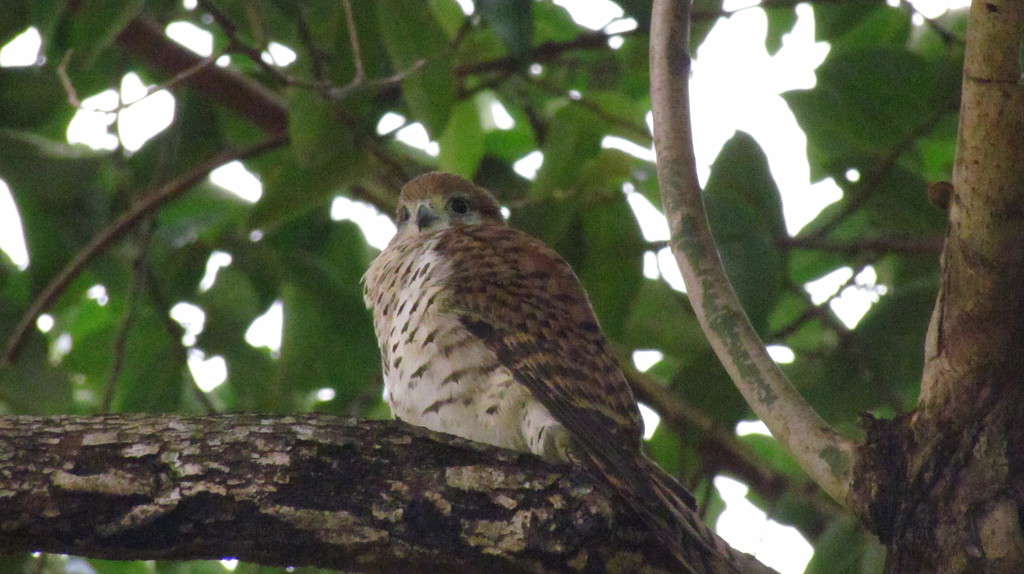
Falco punctatus is the rarest raptor in the world, with less than 500 remaining on Earth.
The Mauritius kestrel is an endemic species, meaning that it lives only in one location. It is an endangered species, with a population estimated at 350-500 individuals. That definitely makes it the rarest raptor in the world.
The threats to this bird are many. There were many cyclones in the 1900s, which hurt their populations. Then centuries of logging wiped out evergreen forests that these birds need for nesting. The further insult of introducing mongoose, outdoor cats, and rats from ships did not help matters any. Then, the broad use of DDT killed both the kestrel’s eggs and their hatchlings. These factors killed nearly every last kestrel in Mauritius. In 1974, only four birds were alive!
What Does the Rarest Raptor in the World Eat?

The rarest raptor in the world likes to eat dragonflies and other insects.
©CreativeNature_nl/iStock via Getty Images
The Mauritius kestrel is mainly a diurnal hunter, feeding on insects, reptiles, and small mammals. Some of its favorite foods are dragonflies, crickets, cockroaches, and geckos. It prefers to hunt in open areas, such as meadows and grasslands.
The Mauritius kestrel is an adept hunter, making the most out of its small size and agility. It is able to fly quickly and maneuver quickly, allowing it to quickly swoop down and catch its prey. It has excellent eyesight, which allows it to spot its prey from far away. These birds live for around 15 years.
The Traveler’s Tree
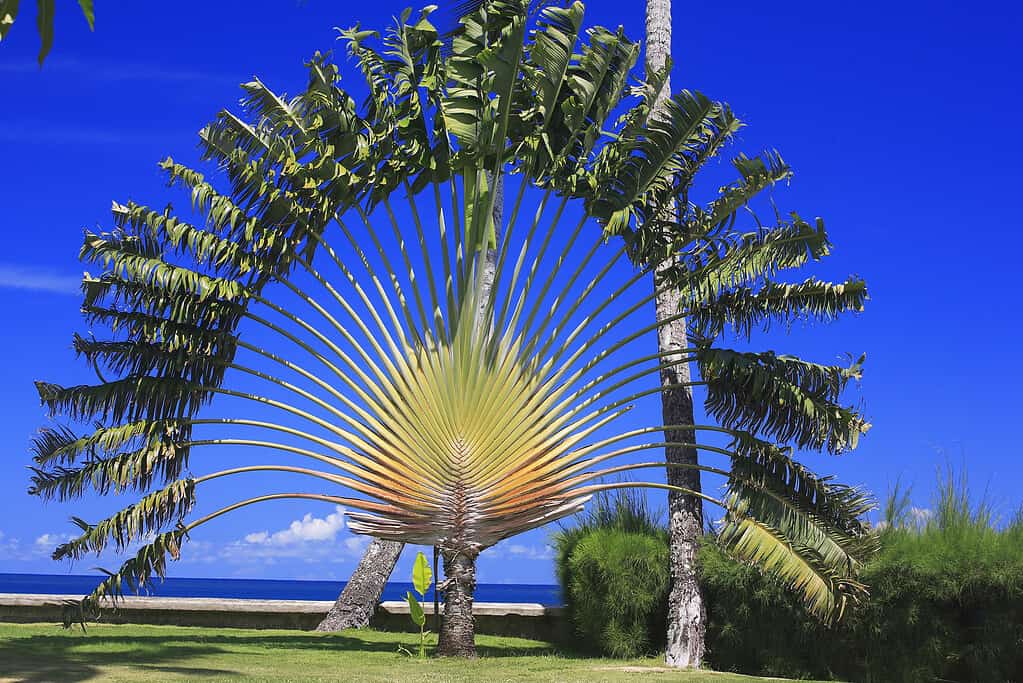
Traveler’s Palm, or traveler’s tree, is a favorite habitat for the blue-tailed day gecko. This gecko is one of the rarest raptors in the world’s finest food sources.
©Michel VIARD/iStock via Getty Images
The Ravenala, also known as the traveler’s tree and traveler’s palm is a unique and interesting plant native to Madagascar. It is a species of flowering plant in the Strelitziaceae family and is closely related to the banana family. It is an extremely hardy plant, able to survive in extreme conditions, including drought, intense heat, and even salty soils.
The Ravenala is an evergreen herbaceous plant and can reach heights of up to 16 feet. The tree’s distinctive fan-shaped pattern of leaves grow in a spiral pattern. The leaves are typically a bright green and can reach up to 6 feet in length. The plant produces petioles, which are a bright yellow and eventually turn brown.
The traveler’s tree stores water in its trunk, allowing it to survive during periods of drought. Animals and people can then use this water in their local environment. It is an important source of food and shelter for many species of birds.
How is the Traveler’s Tree Helping the Mauritius Kestrel?
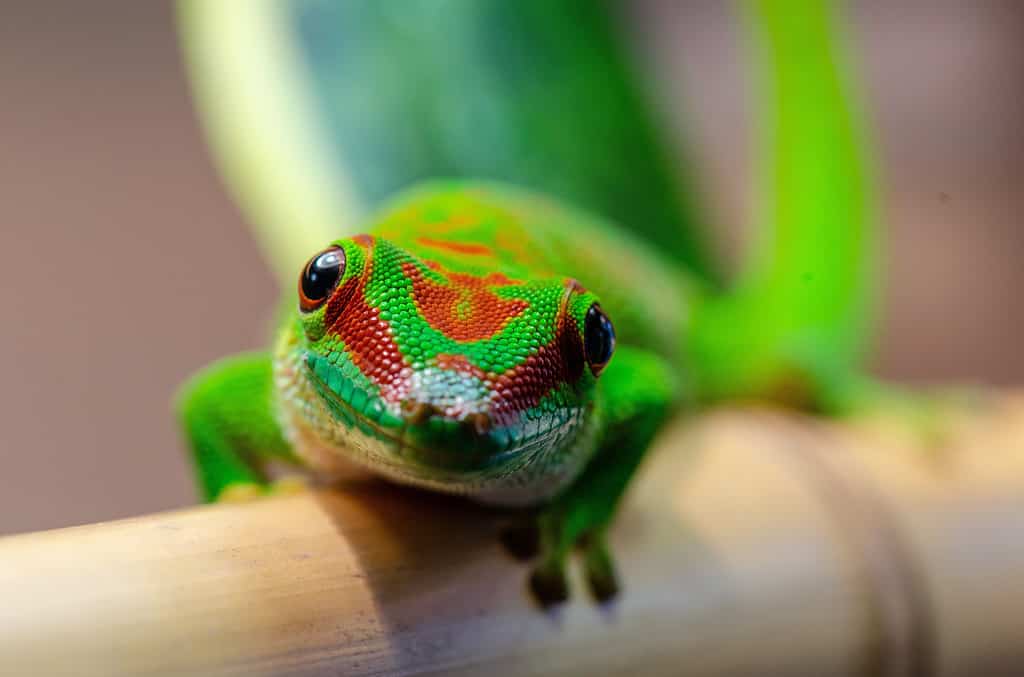
A beautiful shot of a blue-tailed day gecko
©Wirestock/iStock via Getty Images
The traveler’s tree is helping the Mauritius kestrel population because its stiff leaves are great places for the blue-tailed day gecko and the Mauritius upland forest day gecko to bask in the sun. Male geckos are able to defend their territories from the tops of the stems, as they used to do on native hurricane palms, which, unfortunately, have become very scarce in the wild. In addition, the nectar and fruit of the Ravenala also bring in insects for the geckos to feed on, leading to a thriving population.
The Mauritius kestrel, the rarest raptor in the world, is alive today due to the presence of the invasive traveler’s tree. This plant provides an abundance of geckos for the birds to feed on, which make up 70% of their diet. The lizards are rich in calcium necessary for strengthening eggs, and the kestrels that nest near the tree have more successful fledglings. However, the tree also has a negative impact on the local environment, as we’ll discuss below.
How Did the Traveler’s Tree Get to Mauritius?
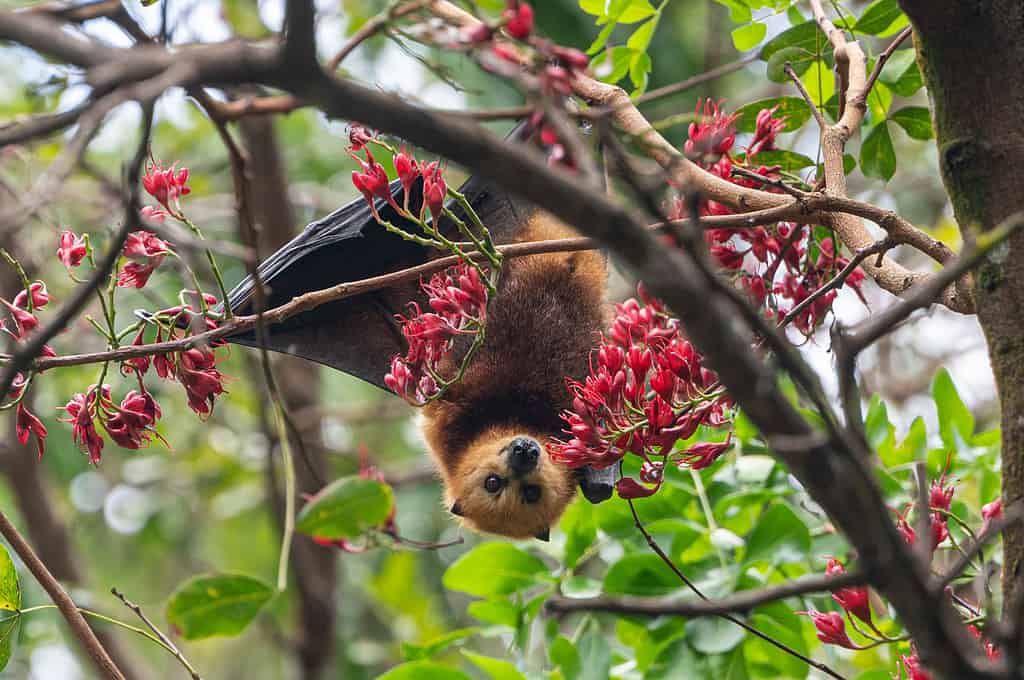
Mauritian
fruit bat
or flying fox (pteropus niger) is one of the culprits responsible for bringing the invasive traveler’s tree seeds to Mauritius.
©Andi Edwards/iStock via Getty Images
The traveler’s tree, originally from Madagascar, was first brought to Mauritius in 1751. The plant’s seeds, covered in bright blue coats, were attractive to fruit-eating bats and birds, which helped them spread across the island. This, along with other invasive plants like strawberry guava trees, crowded out native plants and the insects that feed on them. This has caused a lack of food for insect-eating bats and birds. Despite the negative impacts this species has had on thousands of species in Mauritius, managing invasive plants is not as simple as it seems.
How is the Invasive Traveler’s Tree Harming the Ecosystem?
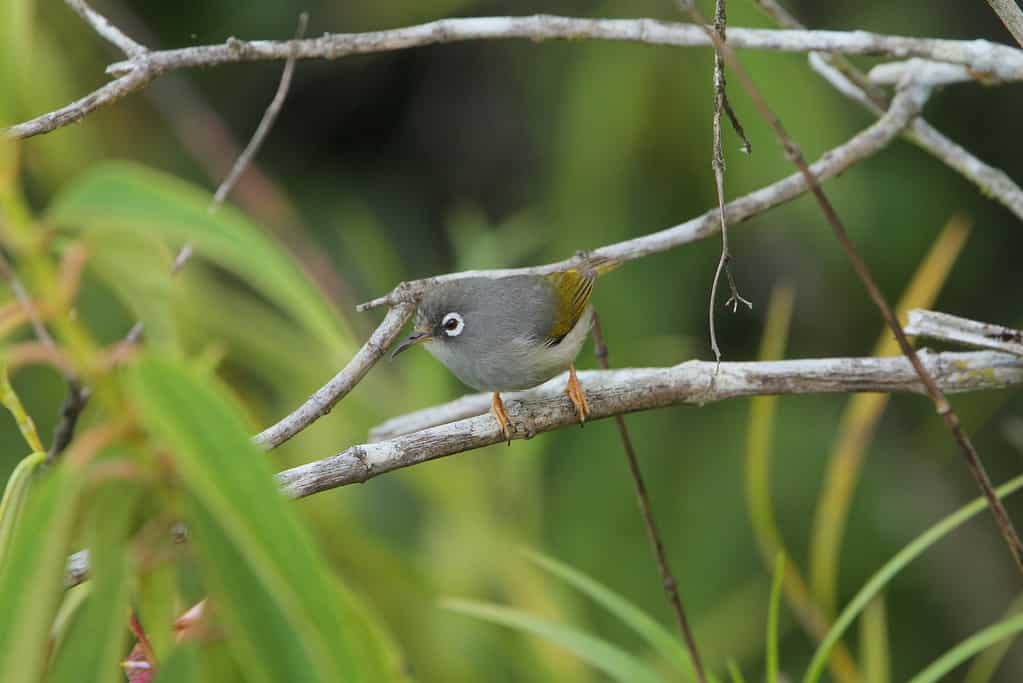
The Mauritius Olive White-eye is an endangered species. The traveler’s tree is crowding out native species that this bird relies on for food.
©AGAMI stock/iStock via Getty Images
The traveler’s tree is an invasive plant in Mauritius. It grows in a dense thicket-forming pattern along the south of the island and in the mountains there. It grows very rapidly and is difficult to contain.
As with all exotic species, when they first arrive, nobody knows the impact they will have until their numbers reach a large enough level to make a difference. By the time anyone noticed, the traveler’s tree was already smothering the native Mauritian trees. In fact, many of the rare plant species are rare because this vigorous tree has nearly wiped them out. Geckos, and the rarest raptor in the world, seem to be one of the few species that benefit from this tree.
Several types of birds and bats on Mauritius have a very specific diet, and the traveler’s tree is killing the plants that they need to live. If the situation continues for too much longer, many other species will be on the endangered list. The endangered species list for Mauritius already contains 322 species.
Among the birds already on the endangered list are the Mascarene swiftlet, Mauritius cuckoo-shrike, Mauritius fody, Mauritius olivaceous bulbul, and Mauritius olive white-eye. The Greater Mascarene flying fox, Javan rusa, and Natal free-tailed bat are all endangered as well.
What is the Solution?
Although it is difficult to determine the appropriate course of action, experts may have to make a decision and intervene in spite of the uncertain consequences. Everyone involved desperately wants to save both the traveler’s tree and the Mauritius kestrel. It would be nice to save the rarest raptor in the world and also protect all of the other species on the island.
When the traveler’s trees are removed, it could lead to drops in both the kestrel and gecko populations, or it might enable a previously unknown weed to spread quickly. Many of the changes that would come about after an eradication can be predicted, but there are other effects that are less certain.
Conservationists suggest that the removal of traveler’s trees should be done gradually in order to give kestrels and geckos time to adjust. They also recommend replacing the invasive plants with native species. Plants like hurricane palms can provide the same advantages to the geckos. In the past, these palms were so plentiful that new colonists on Mauritius referred to them as a “forest atop a forest” due to their feathery crowns emerging from the thick tree cover.
Rats and islanders almost caused the wild hurricane palm to become extinct when they consumed the seeds and harvested the shoots for hearts of palm salad. Fortunately, this species is now widely cultivated in local gardens. However, only about 18 remain in the island’s surviving forests. Many people grow these palms as part of their landscaping design, which provides a suitable habitat for geckos. Conservationists hope that this species will be able to replace the Ravenala and save the kestrel. It is uncertain if this strategy will be successful in the long run, but there is hope.
Thank you for reading! Have some feedback for us? Contact the AZ Animals editorial team.

